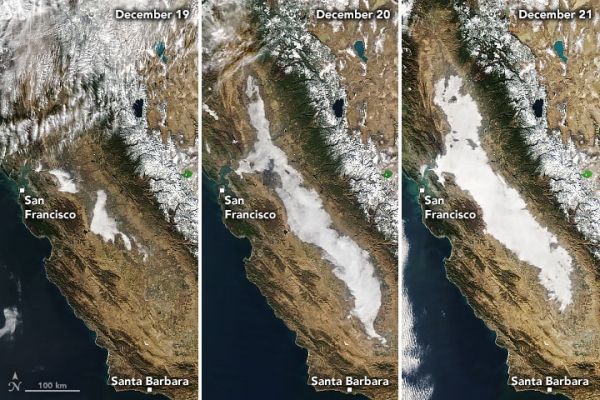As winter moisture rolls in from the Pacific Ocean and makes snow on the Sierra Nevada range, it also can create blankets of white across the Central Valley below. Known as Tule (too-lee), this opaque fog spread across California in time for the 2020 winter solstice. Though it can look pretty from above, the dense fog can be hazardous for people on the ground.
With more frequent rain and lighter winds during winter, moist coastal air masses moving in through the lowlands, and cooler air slipping down from the mountains, the San Joaquin and Sacramento valleys are fertile territory for fog formation. Daytime sunlight warms the soil and causes evaporation, while nighttime cooling can cause that moisture to saturate the air. If winds are calm, the water droplets accumulate until fog clouds form near the ground.
Tule fog tends to form after sunset and becomes thickest just before dawn. It slowly thins as the air warms in daytime sunlight. The name is derived from its formation over reedy, wetland vegetation—Los Tules or tullin.
Continue reading at NASA Earth Observatory
Image via NASA Earth Observatory


